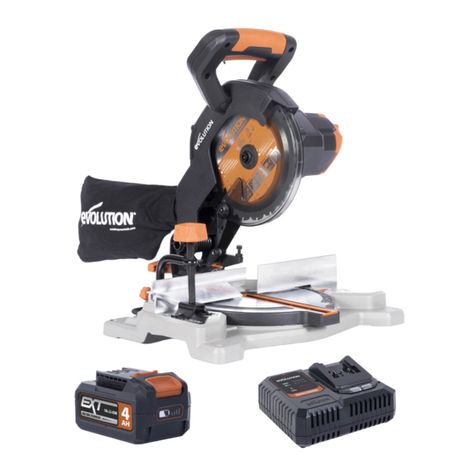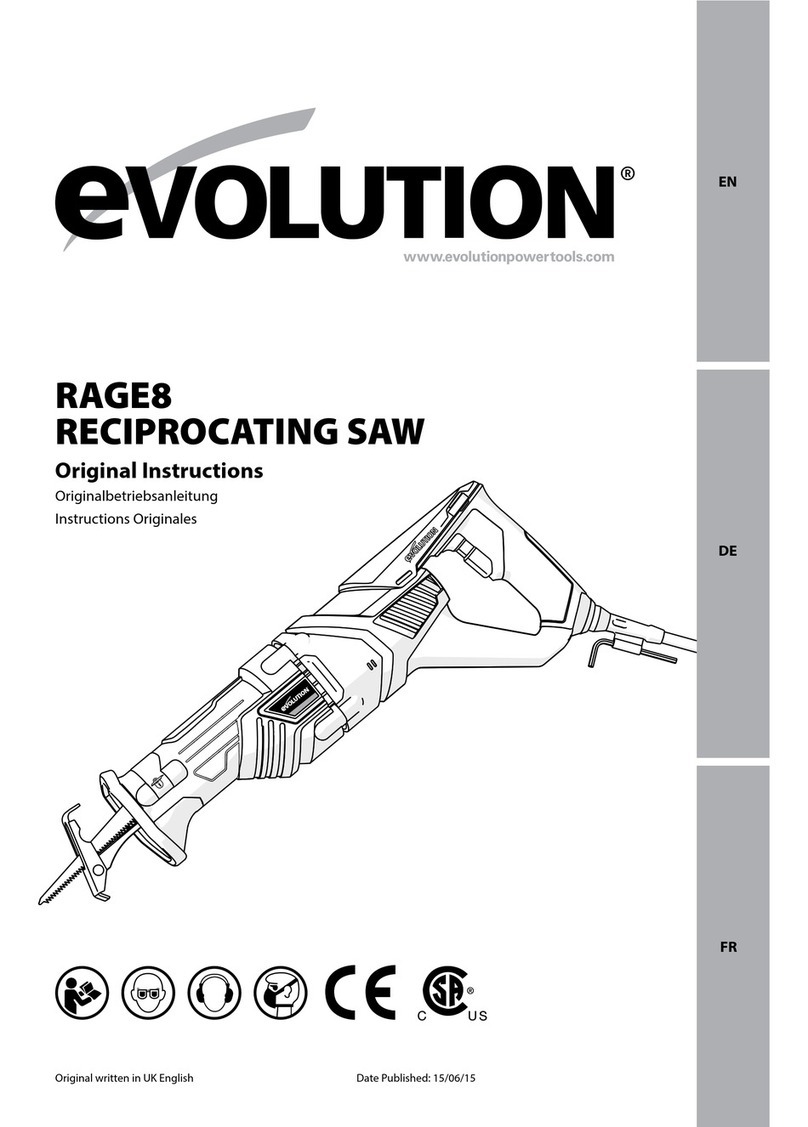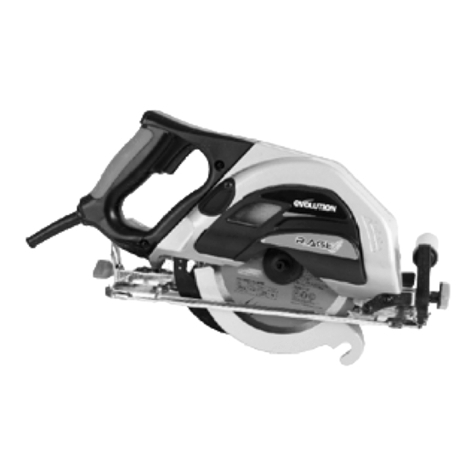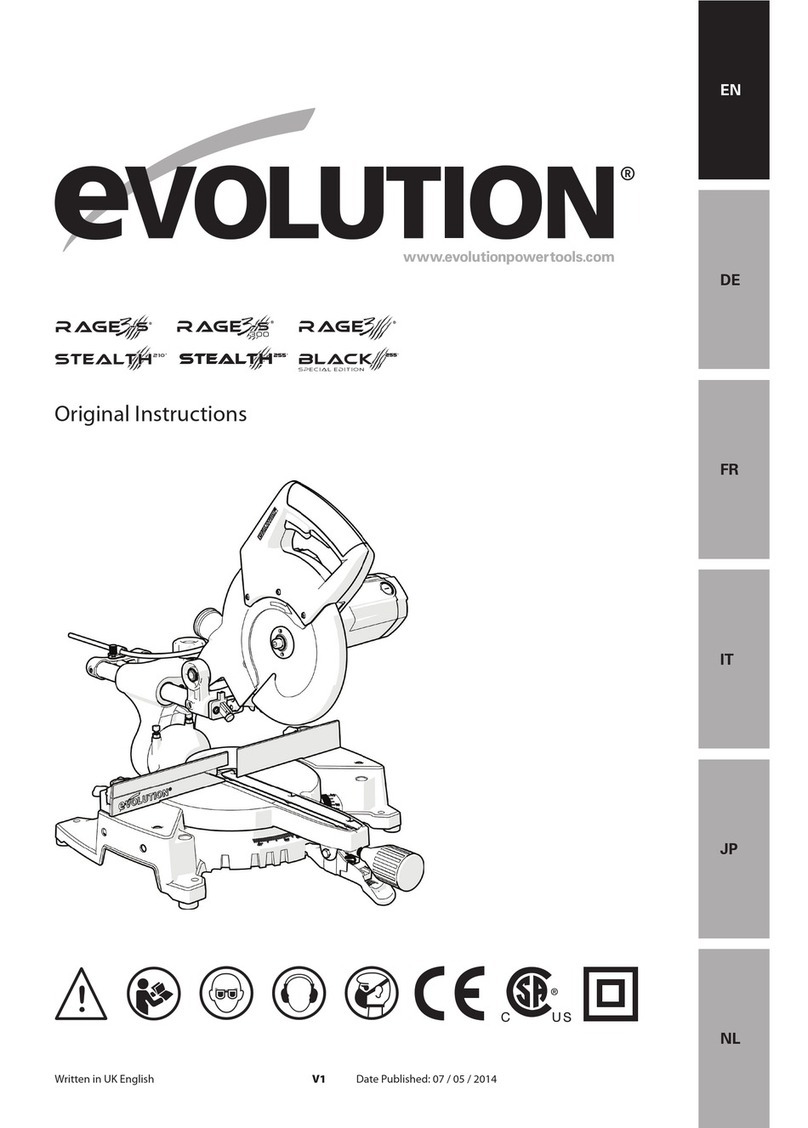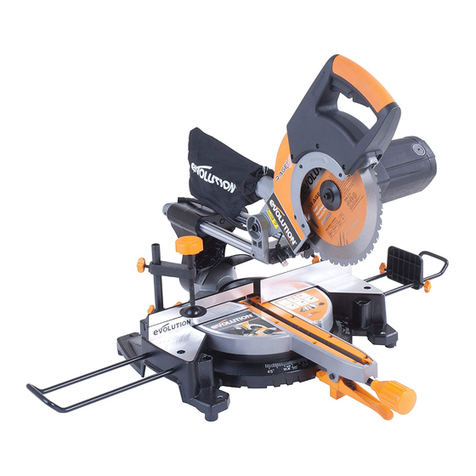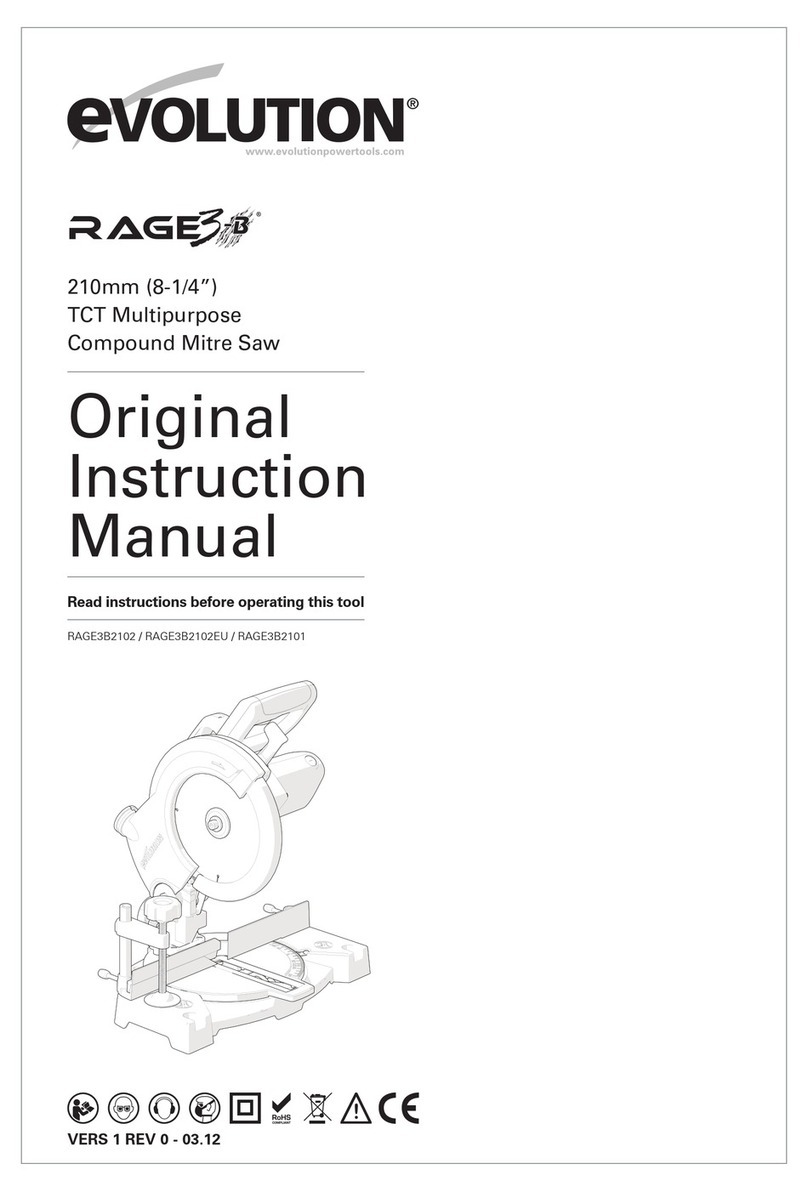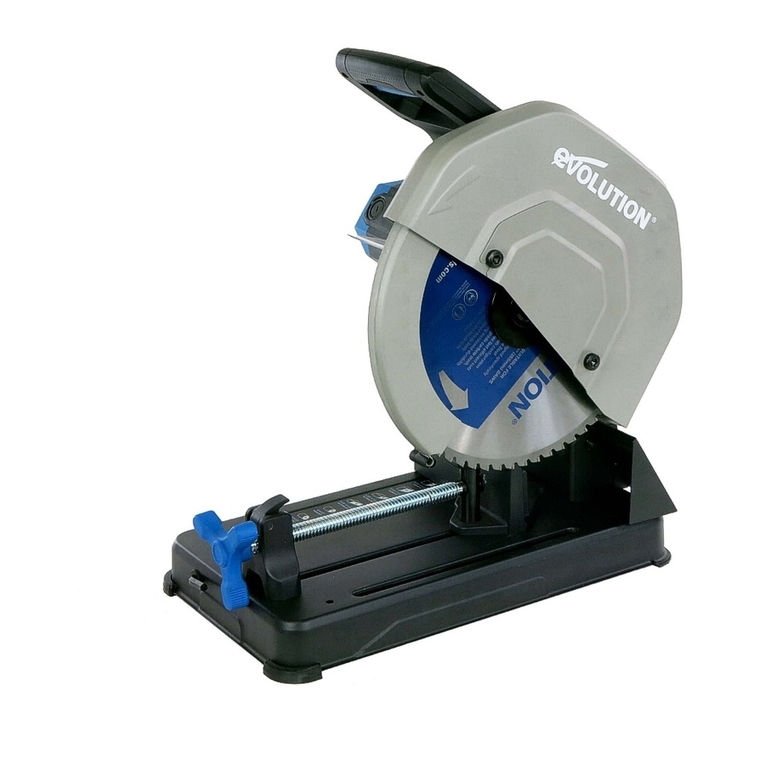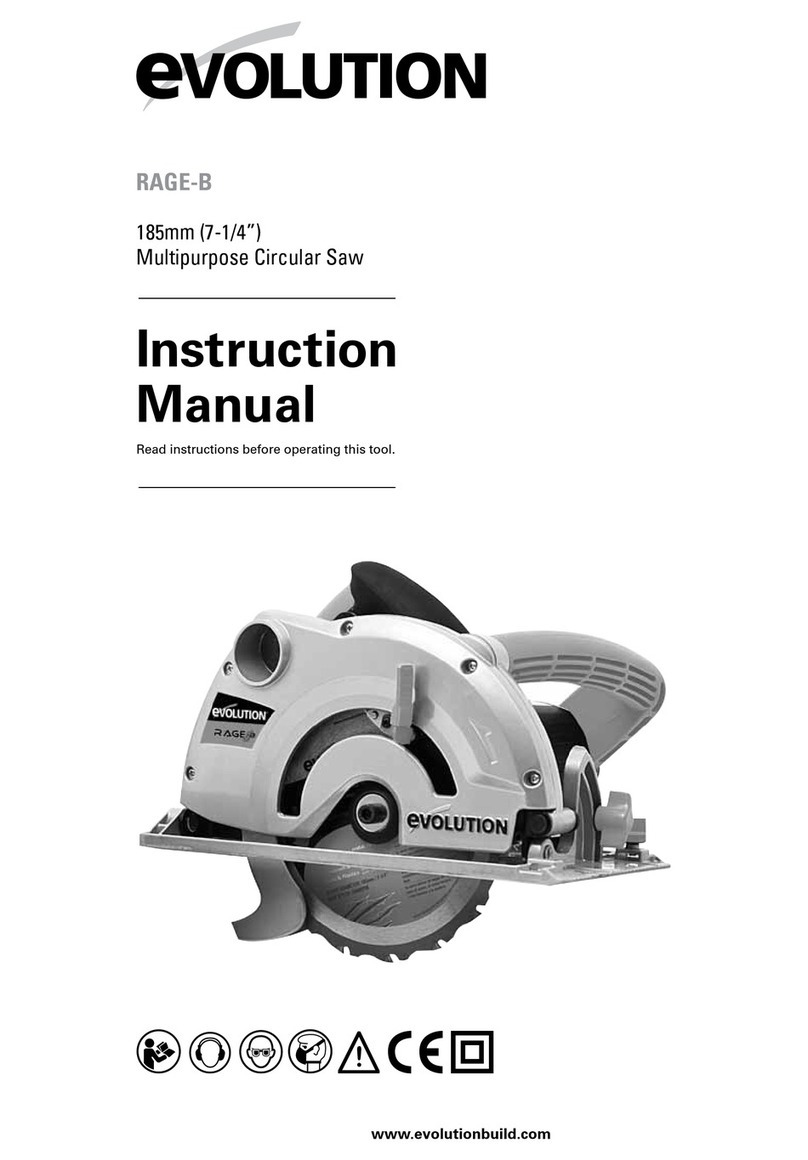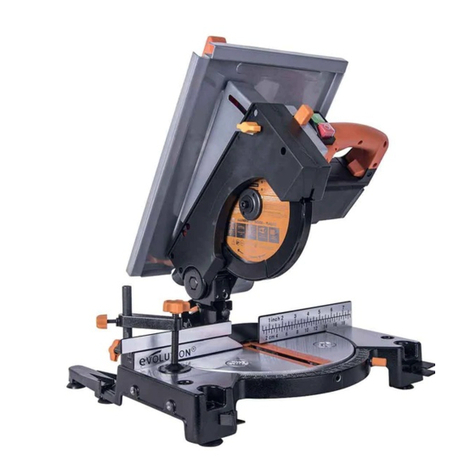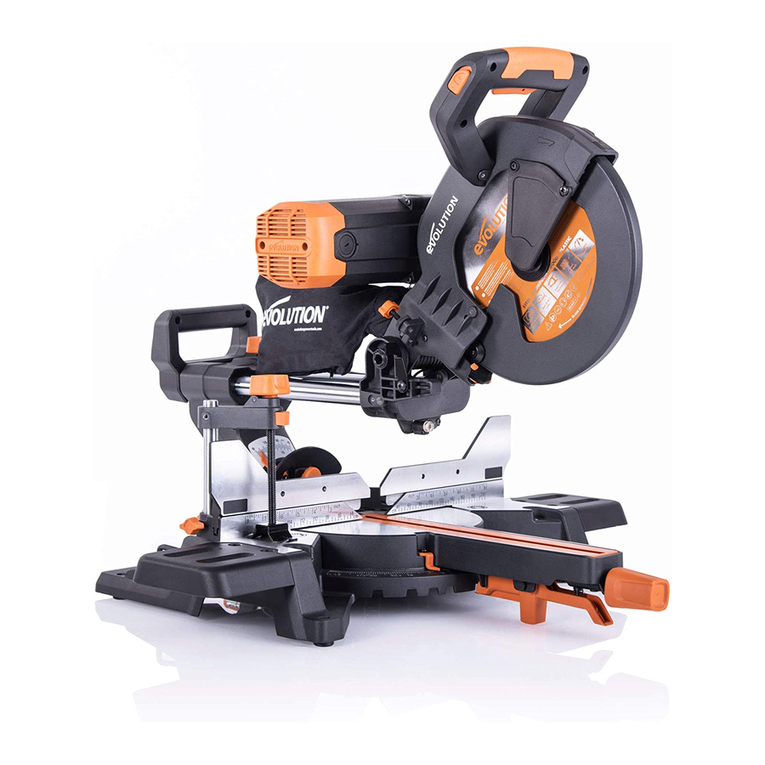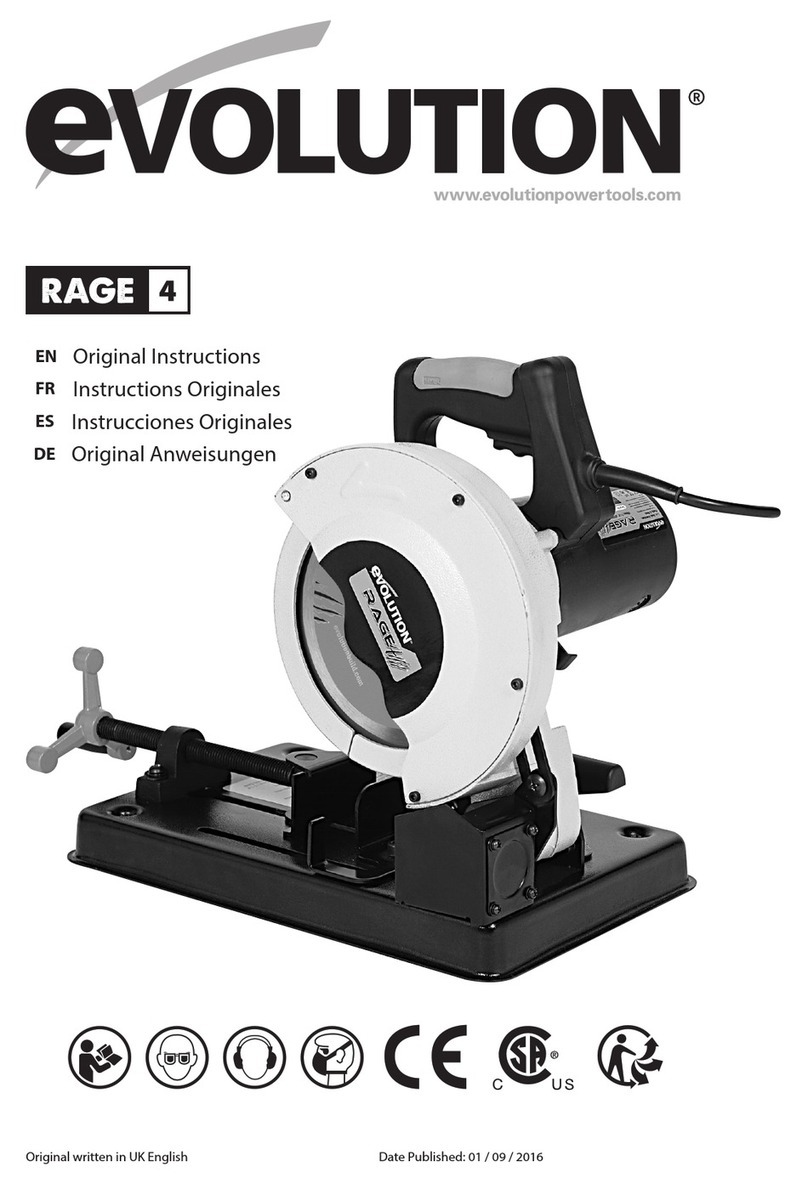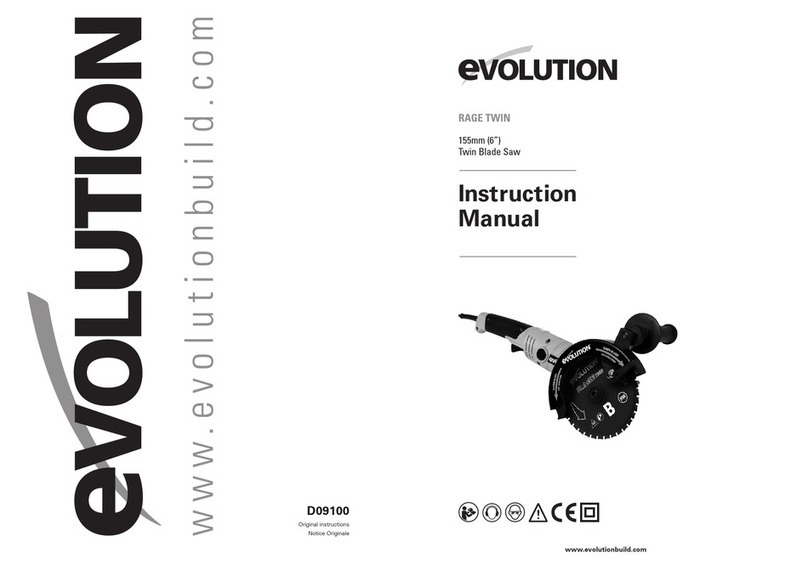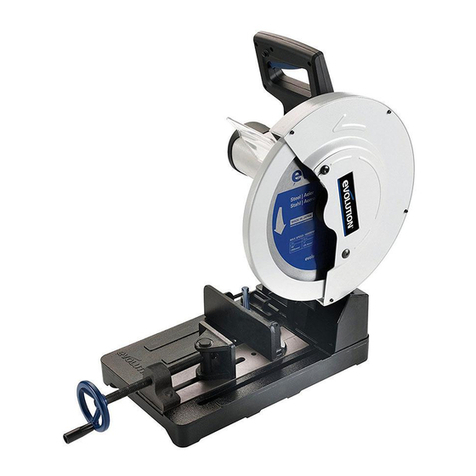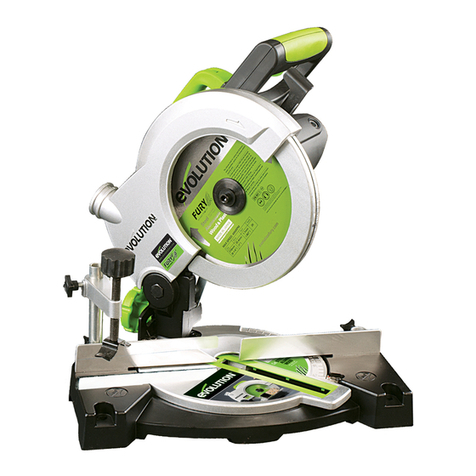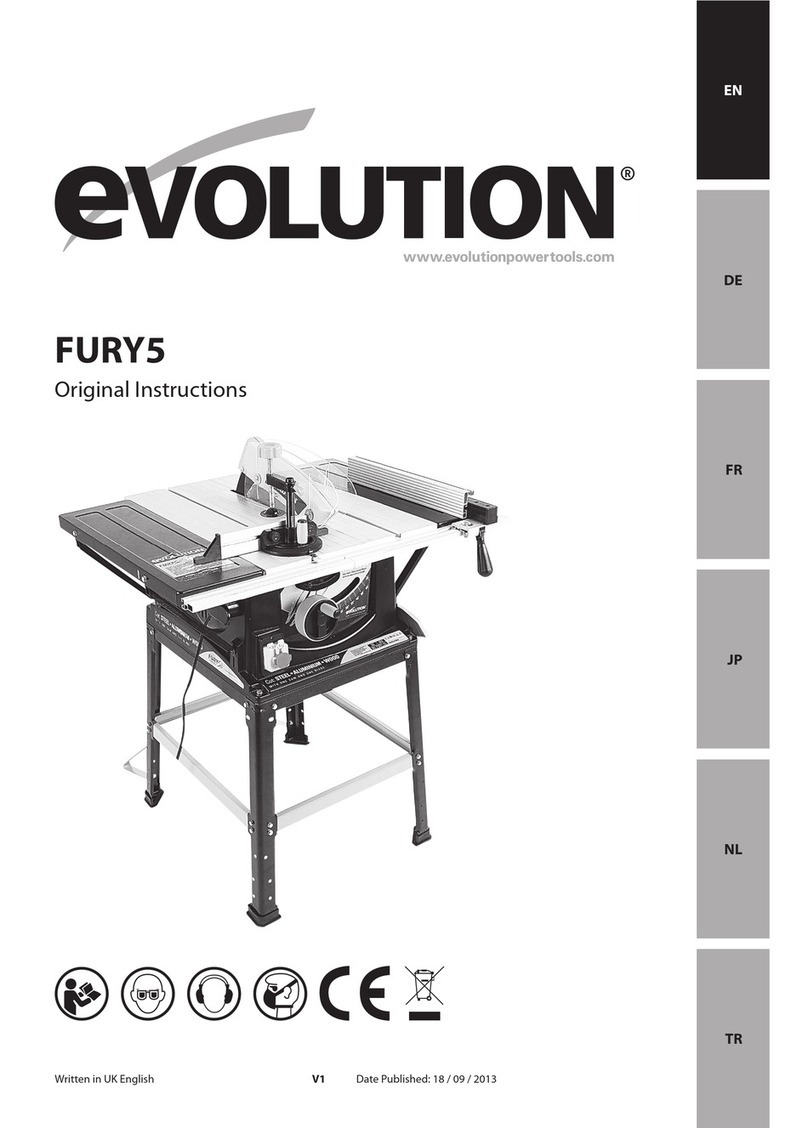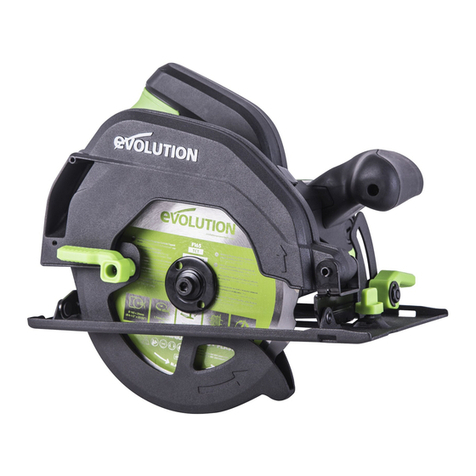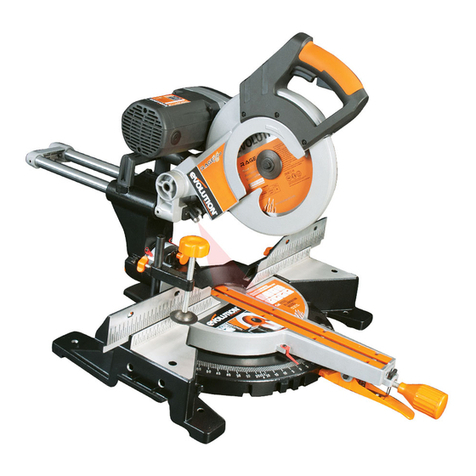Once the dust has been deposited on
surfaces, hand to mouth contact can result
in the ingestion of lead. Exposure to even
low levels of lead can cause irreversible brain
and nervous system damage. The young and
unborn children are particularly vulnerable.
(2.8)
WARNING: Some wood and wood type
products, especially MDF (Medium Density
Fibreboard), can produce dust that may be
hazardous to your health. We recommend
the use of an approved face mask with
replaceable filters when using this machine, in
addition to using the dust extraction facility.
3.5 MITRE SAW SPECIFIC SAFETY
• Not to use saw blades manufactured
from high speed steel.
• Use only the saw with guards in good
working order and properly maintained,
and in position.
• Always to clamp work-pieces to
the saw table.
a) Mitre saws are intended to cut wood or
wood-like products, they cannot be used
with abrasive cut-o wheels for cutting
ferrous material such as bars, rods, studs,
etc. Abrasive dust causes moving parts such
as the lower guard to jam. Sparks from
abrasive cutting will burn the lower guard,
the kerf insert and other plastic parts.
b) Use clamps to support the workpiece
whenever possible. If supporting the
workpiece by hand, you must always
keep your hand at least 100 mm from
either side of the saw blade. Do not use
this saw to cut pieces that are too small
to be securely clamped or held by hand.
If your hand is placed too close to the saw
blade, there is an increased risk of injury
from blade contact.
c) The workpiece must be stationary and
clamped or held against both the fence
and the table. Do not feed the workpiece
into the blade or cut“freehand”in any way.
Unrestrained or moving workpieces could be
thrown at high speeds, causing injury.
d) Push the saw through the workpiece.
Do not pull the saw through the workpiece.
To make a cut, raise the saw head and pull
it out over the workpiece without cutting,
start the motor, press the saw head down
and push the saw through the workpiece.
Cutting on the pull stroke is likely to cause
the saw blade to climb on top of the
workpiece and violently throw the blade
assembly towards the operator.
NOTE: The above warning is omitted for a
simple pivoting arm mitre saw.
e) Never cross your hand over the intended
line of cutting either in front or behind the
saw blade. Supporting the workpiece“cross
handed”i.e. holding the workpiece to the
right of the saw blade with your left hand or
vice versa is very dangerous.
f) Do not reach behind the fence with
either hand closer than 100 mm from
either side of the saw blade, to remove
wood scraps, or for any other reason while
the blade is spinning. The proximity of the
spinning saw blade to your hand may not be
obvious and you may be seriously injured.
g) Inspect your workpiece before cutting. If
the workpiece is bowed or warped, clamp
it with the outside bowed face toward
the fence. Always make certain that there
is no gap between the workpiece, fence
and table along the line of the cut. Bent
or warped workpieces can twist or shift and
may cause binding on the spinning saw blade
while cutting. There should be no nails or
foreign objects in the workpiece.
h) Do not use the saw until the table
is clear of all tools, wood scraps, etc.,
except for the workpiece. Small debris or
loose pieces of wood or other objects that
contact the revolving blade can be thrown
with high speed.
i) Cut only one workpiece at a time.
Stacked multiple workpieces cannot be
adequately clamped or braced and may
bind on the blade or shift during cutting.
j) Ensure the mitre saw is mounted or
placed on a level, rm work surface before
use. A level and rm work surface reduces
the risk of the mitre saw becoming unstable.
k) Plan your work. Every time you change
the bevel or mitre angle setting, make
8
